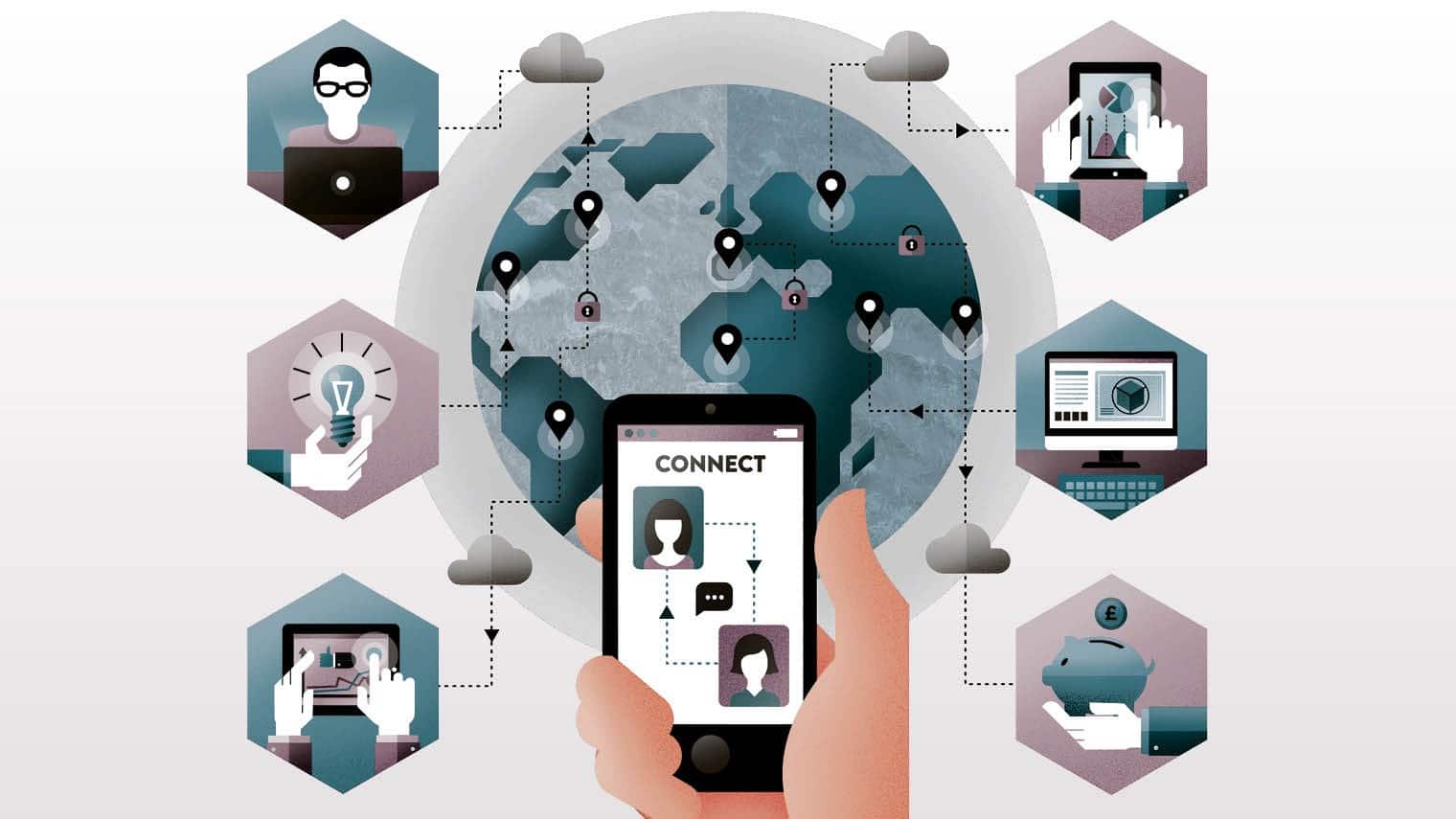
Today’s tools make it much easier to work together.
“When you need to innovate, you need collaboration.”
— Marissa Mayer
Interdependent and distributed teams are quite common nowadays. Interdepartmental teams, virtual teams, teams in different cities, teams distributed on different floors of the same building, the list goes on.
All of these teams involve a group of dispersed individuals working together towards some common goal. They’re oftentimes in different locations and time zones, which in the 21st century no longer serve as barriers to work.
We have more information available at our fingertips today than ever before. Information can be of great value, but only if it is accessible.
While valuable data may exist, team members often lack access to it given that it is stored in different parts of the company, held in different non-comparable formats, or not properly shared. To optimize team efforts, effective collaboration and distribution of valuable data are necessary.
Information can be of great value, but only if it is accessible.
Financial planning and analysis (FP&A) is one organizational function that continuously relies on collaboration. FP&A is responsible for budgeting and reporting, which are tasks that involve the regular collection of numbers from different departments and cost centers.
This makes tasks such as budgeting ongoing, collaborative processes. For FP&A, continuously synchronizing data from varying sources is a necessity.
Something magical happens when team members work together in sync the way they’re supposed to. When information is adequately shared work is completed faster, is more productive, and is much more effective.
One financial process that should ideally become more collaborative is planning. If planning becomes a shared responsibility across departments, chances are it’ll be a more accurate and credible reflection of the business.
Collaboration tools make teamwork easier and significantly assist in this effort. For example according to PwC, collaboration technology has allowed their organization to become a more “virtual” one.
For finance, these tools allow them to work with varying cost centers more effectively. This ensures they are working with the latest numbers, stay informed, and stay on the same page.
What are collaboration tools?
According to PwC, collaboration tools are one form of emerging technology. Emerging technology is defined as “more advanced, lower cost and easily accessible technology that is changing the rules [and] making sense of complex data.”
With today’s technologies, collaboration is among the areas of work seeing some major refurbishment.
Collaboration tools improve performance with new ways of working
“Groups that don’t operate collaboratively end up with data and maybe information, but rarely with the insights and foresight needed to thrive in today’s ultra-competitive and highly volatile business environment.”
— Brian Kalish
Collaboration tools are powerful. Modern technology comes with the ability and need to shift processes towards a more social approach that infuses sociability, interaction, and collaboration within the efforts of a company. By helping teams work together better, collaboration tools make it easier to access previously out of reach, inaccessible, or unshared information.
There are many existing forms of collaboration tools, among them:
Slack: Slack is a chat-driven tool that acts as an organization’s communication hub. By centralizing communication in one place, Slack ensures that co-workers are always connected and within reach.
ERP platforms: ERPs are general financial management tools. Finance ERPs such as Sage Intaact, Netsuite, and Intuit Quickbooks capture and track project costs and keep ongoing financial information up-to-date and in one place.
However, the aforementioned systems don’t address the specific needs of FP&A.
A tool designed by FP&A professionals, for FP&A professionals
Budgeting, planning and forecasting are all collaborative processes. Since this is the case, FP&A can encourage collaboration by leveraging Datarails. With Datarails, Excel-based data is automatically consolidated. This liberates FP&A professionals from routine manual work and grants real-time access to previously untapped data.
“Collaborative business planning starts with having the entire team working with a single, trusted set of numbers and building on a foundation of accurate, up-to-date data.” — Brian Kalish
Datarails makes collaboration between finance and various cost centers easier and more effective. When disparate managers want to update finance on any changes to their budget, all they have to do is click “save” in the Datarails ribbon. This automatically consolidates spreadsheet-based numbers in the Datarails centralized database and notifies management of changes.
Numbers from spreadsheets are automatically made available and can be compared with actuals pulled from any ERP. By granting access to previously inaccessible numbers, the system facilitates collaboration, communication of budget progress and status, and accurate reporting that relies on shared data. This all leads to better and more accurate decision-making.
Success is driven by collaboration
Remember the old adage “there’s no I in Team?”
“Coming together is a beginning, staying together is progress, and working together is success.”
— Henry Ford
To quote Brian Kalish, “to a large extent, the success of an organization is determined by the degree of collaboration between the different departments across the enterprise.” This could not be more accurate.
Organizations need to recognize the immense value of teamwork and do everything in their power to maximize its strength and presence. Today, the best way to do so is to make the most of enabling technologies that make collaboration possible.
About Datarails
Datarails is an enterprise-class FP&A solution that empowers each finance professional to independently work with data and deliver actionable, data-driven insights. Finally, count on numbers you can trust and reduce inefficiencies without having to change how you work on Excel. With Datarails, strengthen the connection between finance and operations to drive better organizational decisions.